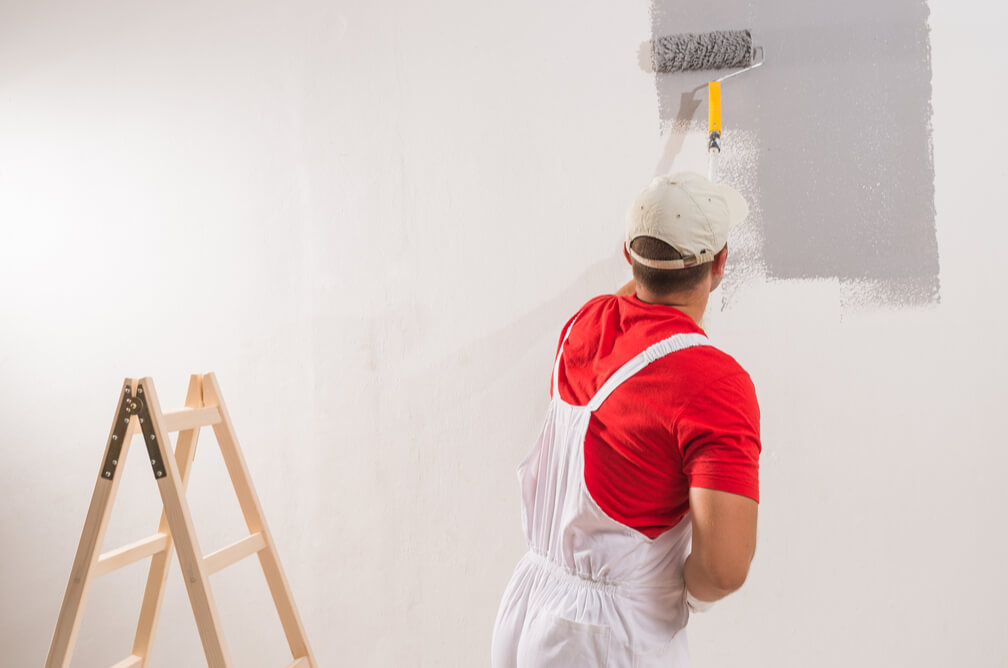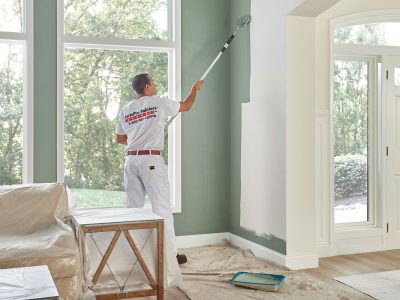Enhance Your Interior Decoration With Comprehensive Color Examination
The assimilation of color assessment right into interior decoration presents a distinct chance to fine-tune and boost the emotional and aesthetic resonance of an area. By engaging with an experienced shade consultant, you can browse the intricacies of shade option, making sure that your choices not just enhance architectural features however additionally reverberate with individual style and psychological influence. This tactical partnership can substantially affect the overall atmosphere of your environment, fostering a sense of harmony and purpose. However, understanding the nuances of this procedure is essential-- what key aspects should be considered to attain optimum outcomes?
Benefits of Shade Assessment

Moreover, color examination help in maximizing natural light and enhancing spatial understanding. Lighter colors can make an area show up more expansive, while darker shades create an intimate setting. Cleveland Metro Painting Specialists. This tactical application of color can substantially affect the general setting of any kind of indoor area
In addition, specialist experts have a detailed understanding of existing fads and classic standards, making certain that the picked shades will certainly stay attractive in time. This foresight can save customers from pricey redesigns in the future. Color assessment encourages customers by providing them with a clear vision and instructions, cultivating confidence in their design selections and eventually leading to an extra successful and satisfying indoor style outcome.
Recognizing Color Psychology
The significance of shade psychology in indoor design can not be overemphasized, as it digs right into the emotional and emotional results that various tones can evoke in people. Colors can affect mood, actions, and even performance, making them an important consideration in any kind of design job.
For example, cozy shades such as red, orange, and yellow are commonly connected with power and heat. They can stimulate sensations of excitement and convenience, making them ideal for social spaces like living areas or kitchens. Conversely, trendy colors like blue, environment-friendly, and purple tend to evoke peace and tranquility, making them optimal for rooms or meditation areas.
In addition, making use of neutral tones can produce a well balanced setting by allowing the bolder colors to stick out without frustrating the detects. Understanding these mental effects makes it possible for developers to create spaces that not only look visually pleasing but also promote emotional wellness.
Integrating shade psychology right into interior decoration entails a thoughtful selection of hues tailored to the intended function of each area, eventually improving the general experience for its owners. This recognition is crucial for achieving a harmonious and functional interior setting.
The Shade Wheel Clarified
Understanding the partnerships in between tones is essential for reliable indoor style, and the shade wheel works as a valuable tool in this procedure. The shade wheel, created by Isaac Newton in the 17th century, shows the range of shades organized in a circular style. It consists of primary shades-- red, blue, and yellow-- that can not be developed by mixing various other colors. Secondary colors, formed by integrating primaries, consist of eco-friendly, orange, and purple. Tertiary colors result from blending a main and an additional color, bring about tones such as red-orange and green.
The shade wheel assists designers realize the connections between shades, including corresponding, analogous, and triadic systems. Complementary shades, located opposite each various other on the wheel, create lively contrasts that can energize a room. Comparable shades, located alongside one another, give a cohesive and unified look. Triadic plans use 3 evenly spaced shades, offering equilibrium and aesthetic rate of interest.
Utilizing the shade wheel in indoor design not just boosts aesthetic charm yet also evokes certain feelings and atmospheres, making it an important referral for shade appointment. Recognizing these relationships inevitably encourages developers to develop spaces that are both aesthetically exciting and useful.
Selecting the Right Palette
Commonly, picking the right combination is a definitive aspect in attaining an effective interior decoration project. A well-chosen color plan can merge a room, boost its attributes, and stimulate wanted feelings. To start, take into consideration the objective of the room. Different rooms offer diverse features and discover this call for schemes that mirror their desired usage; for example, relaxing shades such as soft blues or eco-friendlies function well in bed rooms, promoting relaxation.
Light can drastically alter just how colors show up, so it is vital to assess the space at different times of the day. An unified palette needs to complement these attributes, producing a natural look throughout the room.
When choosing shades, make use of the 60-30-10 policy, which recommends that 60% of the space need to be a dominant shade, 30% an their explanation additional shade, and 10% an accent color. This proportion guarantees equilibrium and visual rate of interest (Cleveland Metro Painting Specialists). Example shades on the walls prior to committing, as this enables you to see just how the hues communicate with one an additional and the total ambiance they produce in your indoor layout project.
Collaborating With a Shade Consultant

When functioning with a color specialist, the process usually begins with an initial assessment. During this conference, you'll review your vision, choices, and the existing aspects in your space. The specialist will analyze your demands and might suggest particular color schemes that straighten with your objectives.
After establishing a direction, the professional will certainly supply samples and aesthetic help to assist you envision the recommended shade plans. This step is critical, as shades can appear differently under differing illumination problems.
In addition, a color professional can direct you in selecting complementary furnishings, artwork, and devices to balance with your chosen scheme. By working together closely, you can accomplish a refined visual that raises your insides and produces a welcoming environment. Ultimately, the expertise of a shade consultant can dramatically improve the total effect of your layout job.
Verdict
In recap, comprehensive color assessment offers as an essential device for enhancing interior style. By leveraging professional expertise of shade psychology and spatial characteristics, a tailored color palette can be developed to stimulate details feelings and create a harmonious environment.
By engaging with a seasoned color specialist, you can navigate the complexities of color choice, ensuring that your choices not only complement building attributes yet also reverberate with individual design and emotional influence. It consists of key shades-- red, blue, and yellow-- that can not be produced by mixing other colors.The color wheel helps developers realize the partnerships in between shades, including complementary, analogous, and triadic schemes.When picking shades, use the 60-30-10 policy, which suggests that 60% of the space should be a leading shade, 30% an additional color, and 10% an accent color. Going Here By leveraging specialist expertise of color psychology and spatial characteristics, a customized shade palette can be created to stimulate specific feelings and create an unified atmosphere.